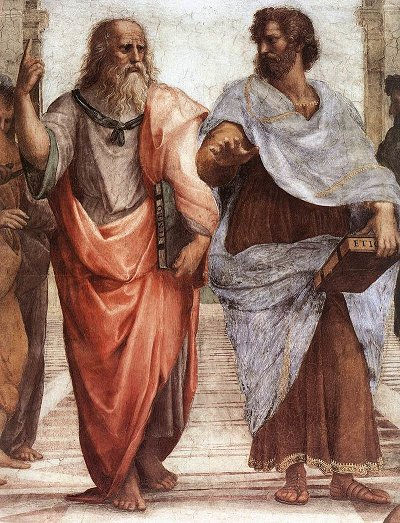Alchemists & Formulas: Pseudo-Democritus
- Sylvia Rose

- Jul 24, 2024
- 4 min read
Updated: Aug 25, 2024
Pseudo-Democritus numbers among the Alexandrian alchemists and writers, with works appearing in the early centuries AD. Originally attributed to ancient Greek philosopher Democritus, the works are now considered written by Bolus (Bolos) of Mendes.

Bolus of Mendes is active in the 3rd century BCE. Mendes, Egypt, already has the reputation for worshipping a goat god, later equated with Baphomet. Mendes does have a sacred ram in antiquity, who is honored and treated much like the fertility bull Apis.
Pseudo-Democritus is a staggered collection of writings. Apart from literary insights of Bolos of Mendes, the texts includes work thought to originate in the 1st century AD.
While other writers allude to them and even claim ownership, the works of pseudo-Democritus are responsible for popularizing the alchemical aphorism:
Nature delights in nature, nature conquers nature, nature masters nature
... often attributed to Persian alchemist(s) Ostanes, also an alias for several writers.

The phrase refers to the fundamental principles governing the combination of elements or natures. It appears in the original alchemical works attributed to Democritus, known as the Four Books, now lost. They exist in commentaries and references.
Several epitomized extracts of them survive in two works, Natural and Secret Questions and On the Making of Silver; as well as in a collection of lists of alchemical substances, Catalogues. The original books address a wide range of topics.

One explains how to give base metals a yellow tinge (gold), one on how to give base metals a white tinge (silver). Coloring metals is among the earliest arts of alchemy, not considered as counterfeiting in the West until c. 5th century AD.
In China, the making of fake gold is punishable by death as early as144 BCE. Alchemists explain the making of real gold is preceded by the making of fake gold, but the law remains. English King Henry IV outlaws the making or multiplication of real gold in 1404 AD.
Another of the Four Books is on coloring stones to create precious stones. Another covers dyeing fabrics purple, using cheaper substitutes for the costly Tyrian purple of the Phoenicians.
These topics are also covered in the 4rd century AD Stockholm papyrus and c. 250 AD Leyden papyrus. In 1885 French chemist Pierre Marcellin Berthelot, refers to the Leyden papyrus in his account of the origins of Greco-Egyptian alchemy.

The Leyden papyrus contains various explanations including:
Purification and Hardening of Lead:
Melt it, spread on the surface lamellose alum and copperas reduced to a fine powder and mixed, and it will be hardened.
Purification of Tin:
Lead and white tin are also purified with pitch and bitumen. They are made pure by having alum, salt of Cappadocia, and stone of Magnesia thrown on their surfaces.

Production of Asem:
Ingredients
tin, 12 drachmas
mercury, 4 drachmas
earth of Chios [type of clay], 2 drachmas
To the melted tin, add the crushed earth, then the mercury, stir with an iron, and put (the product) in use.
Note: while asem refers to a copper alloy or the metal electrum, this procedure would produce an imitation. Earth of Chios, Chian earth or Chia terra is a white clay earth famed as an astringent and cosmetic since antiquity, from the Isle of Chios, Greece.

Doubling of Asem (Electrum):
"One takes: refined copper, 40 drachmas; asem, 8 drachmas; tin in buttons, 40 drachmas: one first melts the copper and after two heatings, the tin; then the asem. When all are softened, remelt several times and cool by means of the preceding composition.
After having augmented the metal by these proceedings, clean it with talc. The tripling is affected by the same procedure, with weight being proportioned in conformity with what has been stated above."

Asem is a general term for a metal mix and can also refer to electrum, a natural alloy of silver and gold, often with traces of copper. The first coins in the Western world are minted in 640 BCE using electrum.
The Leyden papyrus mentions Pseudo-Democritus, Zosimos and others of the Alexandrian school. Names like Pseudo-Democritus, Pseudo-Olympiodorus and later, Pseudo-Geber, are common in the world of alchemy, where secrecy is paramount.

Tumult occurs in 297 - 298 due to Alexandria's support of a pretender against Roman Emperor Diocletian. After a months-long siege, Diocletian subdues the city and takes away its right to mint its own coinage.
The real Democritus' original writings have not been preserved and are known only through indirect sources. Aristotle, who considers him a significant competitor in the realm of natural philosophy, provides many references.

In ancient times, Democritus is dubbed the 'laughing philosopher' due to his focus on the importance of happiness. He also perceives the nature of the atom.
Non-Fiction Books:
Fiction Books:
READ: Cult of the Fire God - Bronze Age Quest Adventure
READ: Lora Ley Adventures - Germanic Mythology Fiction Series
READ: Reiker For Hire - Victorian Detective Murder Mysteries




